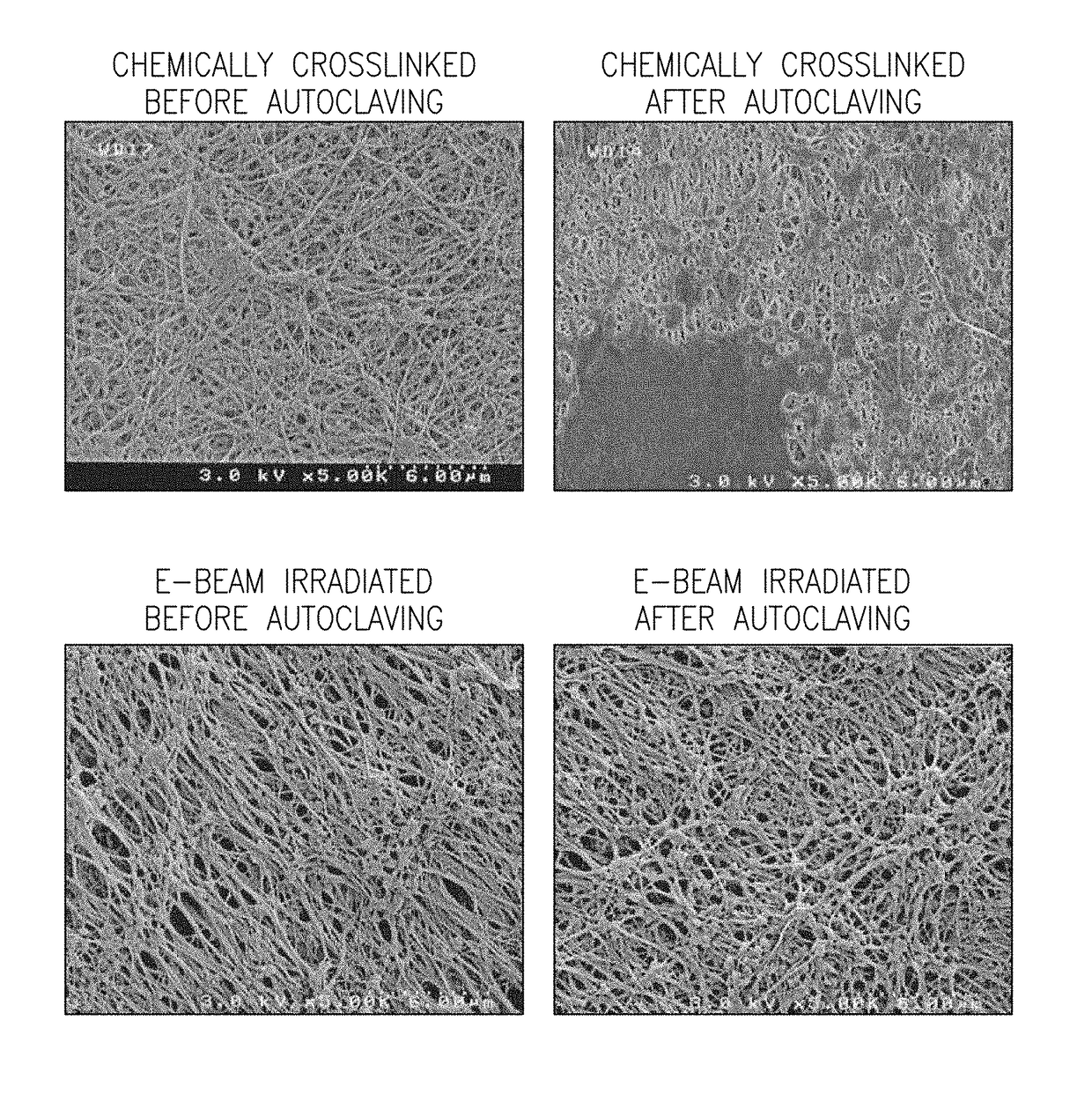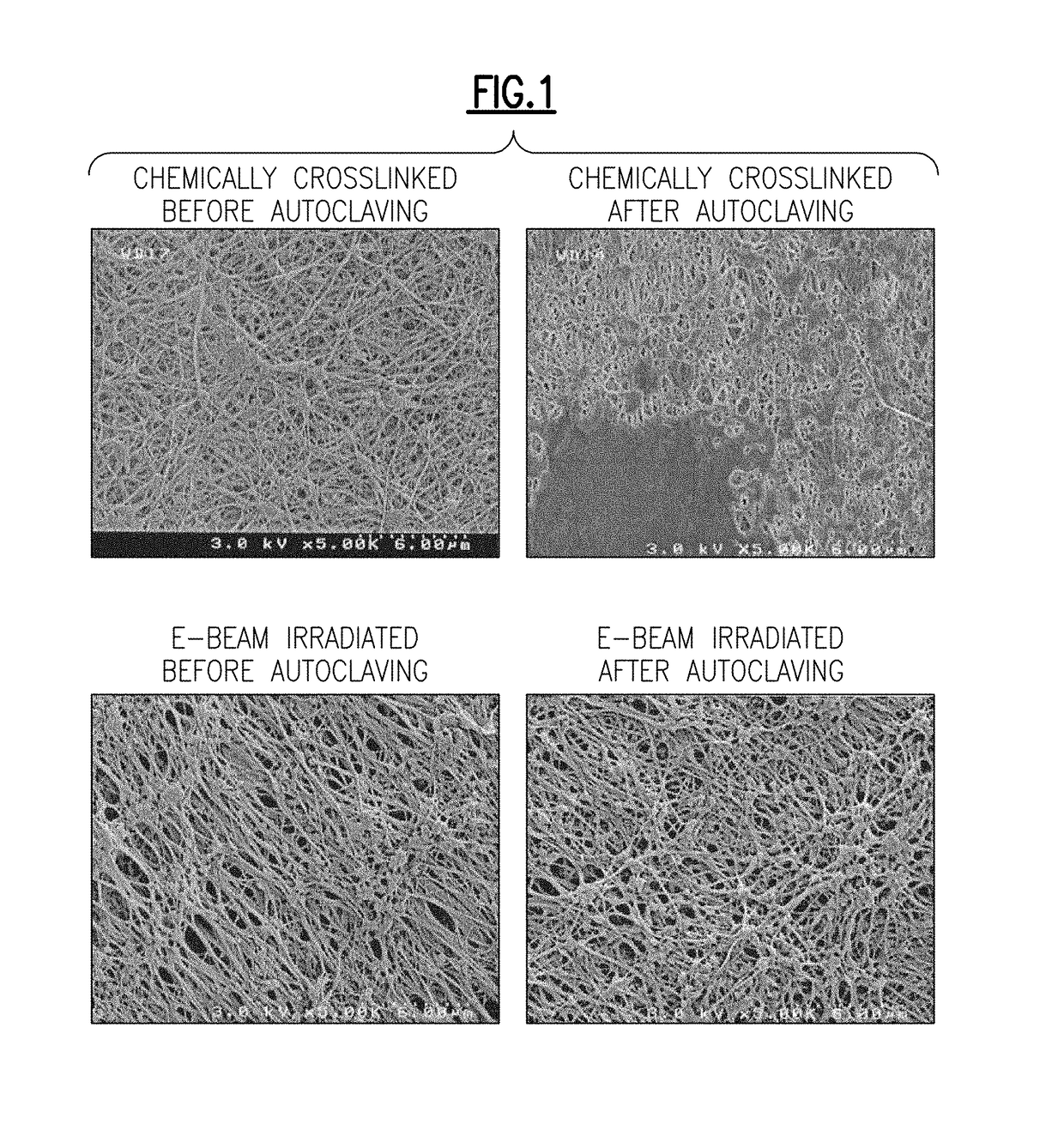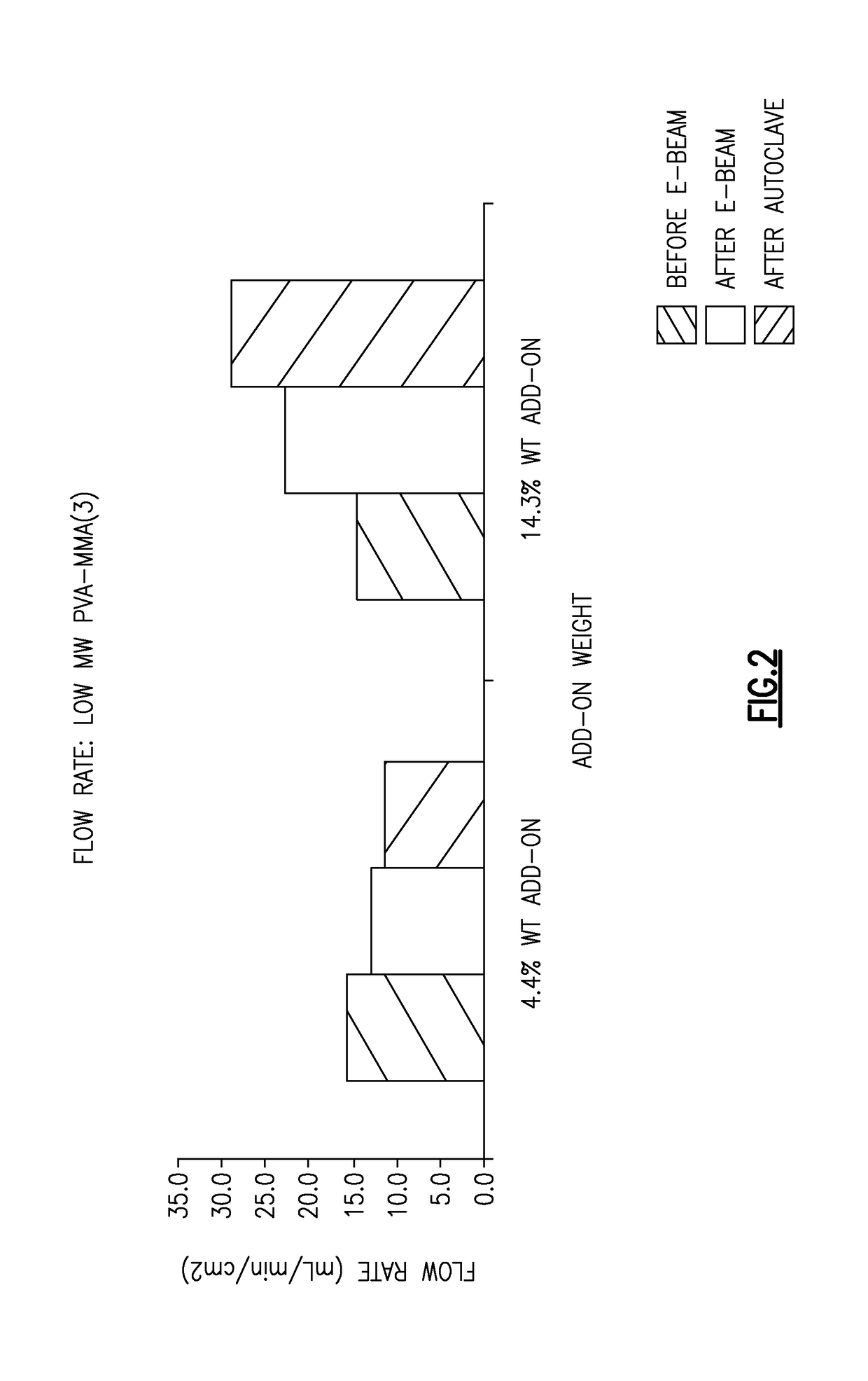Permanent hydrophilic porous coatings and methods of making them
a hydrophilic porous coating and permanent technology, applied in the direction of filtration separation, pretreatment surface, separation process, etc., can solve the problems of non-permanent hydrophilic properties of current processes, difficulty in filtration of liquid water, and high cost of hydrophilic materials
- Summary
- Abstract
- Description
- Claims
- Application Information
AI Technical Summary
Problems solved by technology
Method used
Image
Examples
example 1
[0066]In this example, functionalized PVA was synthesized and is referred to as PVA-MMA(2.4)-high MW. PVA (20.1 g, 456 mmol, Celvol 165 from Celanese Ltd.) was added to a 500 mL three-necked round-bottom flask with anhydrous DMSO (175 mL) and stirred vigorously at 75° C. until a homogeneous solution was achieved. The reaction was cooled to 40° C., and 2-isocyanatoethyl methacrylate (3.53 g, 22.8 mmol) was added slowly to the vigorously stirring solution. The viscous solution was stirred for 24 hours, and then cooled to room temperature. The polymer was precipitated into a 5:1 mixture of isopropanol:ether (800 mL total). The flocculent white solid was dried under vacuum at room temperature. 1H NMR showed approximately 2.4% of the repeat units contained the graftable methacrylate linkage (21.5 g, 91% yield, 42% conversion). 1H NMR (D2O, 400 MHz) δ 6.13 (1H, bs, CHH═CMe), 5.72 (1H, bs, CHH═CMe), 4.24 (2H, bm, CH2CH2), 4.1-3.5 (43H, bm, CH of PVA), 3.45 (2H, bm, CH2CH2), 1.91 (3H, bs, C...
example 2
[0067]In this example, functionalized PVA was synthesized and is referred to as PVA-MMA (5.0)-high MW. PVA (20.1 g, 456 mmol, Celvol 165 from Celanese Ltd.) was added to a 500 mL, three-necked round-bottom flask with anhydrous DMSO (150 mL) and stirred vigorously at 95° C. until a homogeneous solution was achieved. The reaction was cooled to room temperature, and 2-isocyanatoethyl methacrylate (10.1 g, 65.1 mmol) was added slowly to the vigorously stirring solution in an ice bath to control any exotherm. The viscous solution was stirred for 24 hours at 40° C., and then cooled to room temperature. The polymer was precipitated into a 3:1 mixture of isopropanol:ether (700 mL total). The flocculent white solid was dried under vacuum at room temperature. 1H NMR showed approximately 5% of the repeat units contained the graftable methacrylate linkage (24.0 g, 80% yield, 39% conversion). 1H NMR (DMSO-d6, 400 MHz) δ 6.13 (1H, bs, CHH═CMe), 5.72 (1H, bs, CHH═CMe), 4.95 (1H, bm, OH of PVA), 4....
example 3
[0068]In this example, functionalized PVA was synthesized and is referred to as PVA-MMA (1.4)-high MW. PVA (20.0 g, 454 mmol, Celvol 165 from Celanese Ltd.) was added to a 500 mL round-bottom flask with DMSO (200 mL) and stirred vigorously at 75° C. until a homogeneous solution was achieved. The reaction was cooled to 45° C., and 4-(dimethylamino)pyridine (2.22 g, 18.2 mmol) and 2-isocyanatoethyl methacrylate (1.41 g, 9.09 mol) was added slowly to the vigorously stirring solution. The viscous solution was stirred for 24 hours, and then cooled to room temperature. The polymer was precipitated into isopropanol (1200 mL total). The flocculent white solid was dried under vacuum at 40° C. 1H NMR showed approximately 1.4% of the repeat units contained the graftable methacrylate linkage (20.8 g, 97% yield, 70% conversion). 1H NMR (DMSO-d6, 400 MHz) δ 6.07 (1H, bs, CHH═CMe), 5.67 (1H, bs, CHH═CMe), 4.95 (1H, bm, OH of PVA), 4.67 (14H, bm, OH of PVA), 4.47 (36H, bm, OH of PVA), 4.22 (23H, bm...
PUM
| Property | Measurement | Unit |
|---|---|---|
| molecular weight | aaaaa | aaaaa |
| pore size | aaaaa | aaaaa |
| porosity | aaaaa | aaaaa |
Abstract
Description
Claims
Application Information
 Login to View More
Login to View More - R&D
- Intellectual Property
- Life Sciences
- Materials
- Tech Scout
- Unparalleled Data Quality
- Higher Quality Content
- 60% Fewer Hallucinations
Browse by: Latest US Patents, China's latest patents, Technical Efficacy Thesaurus, Application Domain, Technology Topic, Popular Technical Reports.
© 2025 PatSnap. All rights reserved.Legal|Privacy policy|Modern Slavery Act Transparency Statement|Sitemap|About US| Contact US: help@patsnap.com



